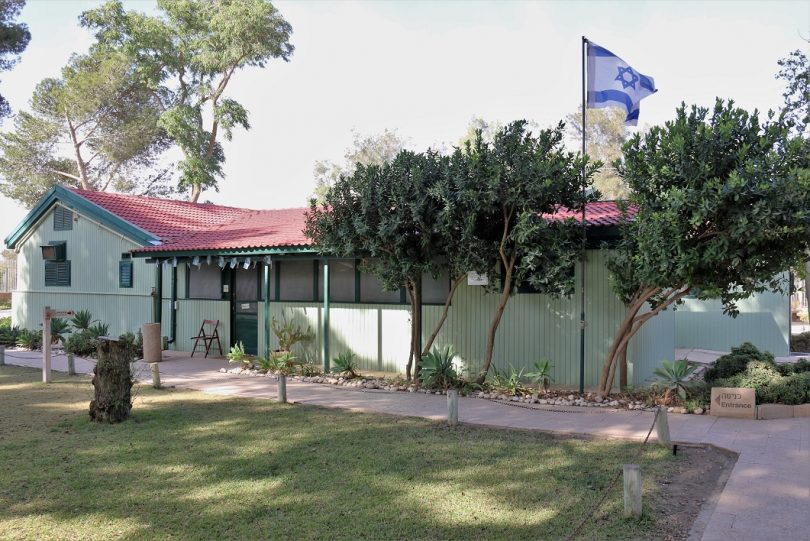Durch den morgendlichen Berufsverkehr ging es für mich heute aus Tel Aviv in den Süden. Erster Stopp war Tell Be’er Sheva, Was ein Tell ist, habe ich ja schon erklärt. Bei diesem stammen die ersten Spuren aus dem vierten vorchristlichen Jahrtausend. Auch in der Bibel wird der Ort erwähnt, beispielsweise im Zusammenhang mit den Patriarchen Abraham und Isaak. Die nächsten beiden Stopps hatten was mit der jüngeren Geschichte zu tun. So war ich danach erst in Sede Boker, einem Kibbuz, auf dem der erste Ministerpräsident des Staates Israels Ben Gurion ab 1970 den Rest seines Lebens verbrachte. Das Foto zeigt sein Haus von außen. Wenige Kilometer entfernt liegen Ben Gurion und seine Frau begraben. Die Gräber habe ich mir dann auch noch angesehen. Der nächste Stopp macht dann wieder einen Zeitsprung in die Antike. Der Nationalpark Awdat oder Avdat, in dem die Überreste der Stadt Avdat, die die Nabatäer im 4. Jahrhundert v. Chr. als Wegstation auf der Gewürzstraße gründeten, zu besichtigen sind. Dann ging es noch weiter in den Süden und in der Zeit zurück nach Mitzpe Ramon. Von dem Ort hat man einen tollen Blick in den Machtesch Ramon oder Ramon-Krater. Dies ist der größte Erosionskrater in der Wüste Negev. Zum Abschluss des Tages bin ich dann noch zum Toten Meer gefahren, von dem ich aber noch nichts sehen konnte, da es schon dunkel war.
Through the morning rush hour I went from Tel Aviv to the South today. First stop was Tell Be’er Sheva, I already explained what a Tell is. In this the first traces date from the fourth century BC. The Bible also mentions the place, for example, in connection with the patriarchs Abraham and Isaac. The next two stops had something to do with the recent history. So afterwards I was in Sede Boker, a Kibbutz, on which the first Prime Minister of the State of Israel Ben Gurion spent the rest of his life between 1970 and 1973. The photo shows his house from the outside. Ben Gurion and his wife are buried a few kilometers away. So I visited the tombs as well. The next stop is then again a time jump into the ancient times. The National Park Awdat or Avdat, where the remains of the city of Avdat can be visited. The city was founded by the Nabataeans in the 4th century BC as a stopover on the Spice Route. Then I went further south and further back in time to Mitzpe Ramon. From the city you have a great view into the Machtesch Ramon or Ramon Crater. This is the largest erosion crater in the Negev desert. At the end of the day I drove to the Dead Sea, but I could not see it since it was already dark.

Schreibe einen Kommentar
Du musst angemeldet sein, um einen Kommentar abzugeben.